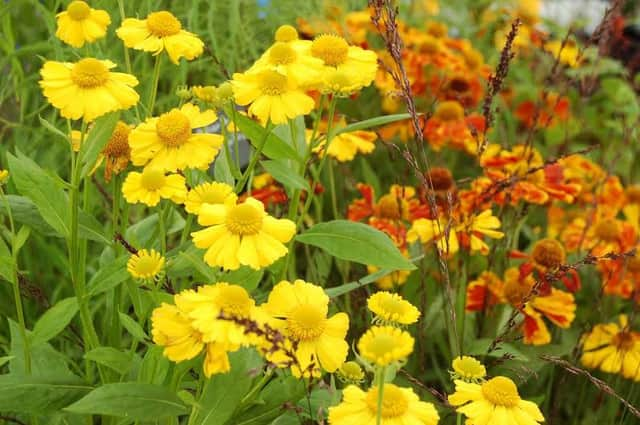Perennials for late summer


There are however lots of lovely perennials that flower from July through to late September that are perfect for adding colour to the garden and now is a good time to choose and plant them in the garden.
At this time of the year garden centres will have a selection, or if you are going to a plant fair or garden show you’ll find plenty to choose from.
Advertisement
Hide AdAdvertisement
Hide AdOne type of perennial that is guaranteed to flower and add colour is helenium.
The daisy-like flower heads are produced on stout stems in a range of colours from golden yellow through to a deep burnt orange colour.
They are totally hardy and each year the clump will get slightly larger. Plants range in height from 60cm to 120cm depending on the variety you choose, allowing you to use them in the front or back of the border.
Flowers are produced over a long period and for a natural display in the border heleniums work very well when planted with grasses that sway in the breeze. Other late summer flowering perennials that look good now include, achillea, lysimachia, eryngium, monarda and crocosmia and when planted together you will get a wonderful mix of red, oranges, yellows and white to create a fantastic display.
Advertisement
Hide AdAdvertisement
Hide AdIf you want to add some extra colour to borders, now is a good time to do it. The soil is warm and moist after the recent rain, meaning plants will establish quickly and still give you a display for the rest of the season.
All of the plants above are herbaceous perennial and will die down in winter, when the old stems can be cut back to ground level. Next spring new shoots develop and the plants will grow away without any problems to provide you with colour in late summer.
Jobs for the week
To help green tomatoes ripen on the plants remove some of the lower leaves to increase the flow of air around the fruits. Keeping the plants as warm as possible and feeding with a high potash tomato fertiliser will also help.
Cut back the dead flower stems from clumps of hostas, but allow the large leaves to carry on growing.
Advertisement
Hide AdAdvertisement
Hide AdSlugs and snails can also be a problem at this time of the year, in damp weather so protect plants to prevent new growth being damaged.
To keep runner beans fruiting through September, pick the pods every few days while tender to allow more to develop.
You can follow Martin on his Face book page, Martin Fish – Simply Gardening or on www.martinfish.com